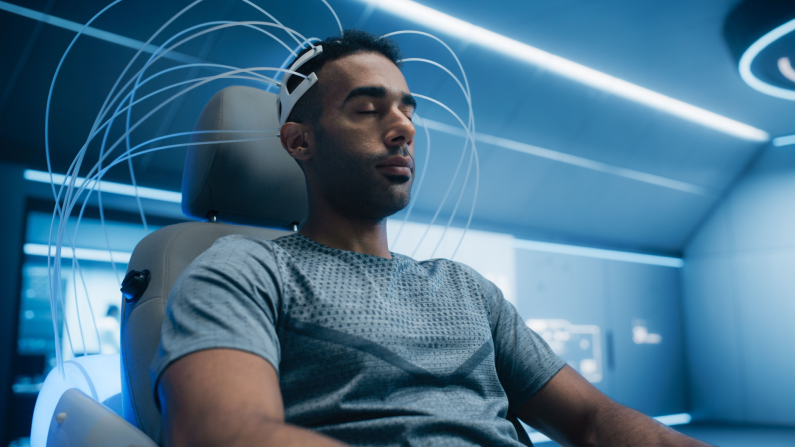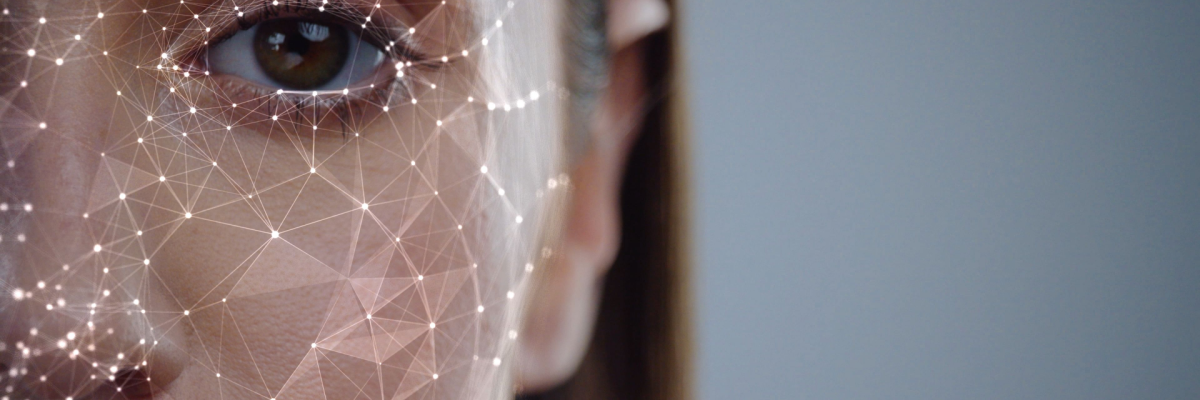We live in an era when digital technologies are becoming not just auxiliary tools but literally a part of our bodies — an intuitive environment and an interface for consciousness.
Today, looking at current trends, we can confidently say: the moment is near when wearable electronics, flexible interfaces, and even implants will move beyond niche solutions and become something common and everyday. In this article, we’ll explore the most relevant trends in the world of smart gadgets for 2025.
Trends of the Year

The gadgets of the future do not always look like a classic smartphone or tablet anymore. One of the most striking trends, therefore, is flexible and stretchable displays—screens that can bend, stretch, or be integrated directly into clothing or the surface of the body. The study “Flexible wearable electronics for enhanced human-computer interaction and virtual reality applications” shows that flexible electronic materials, including displays and sensors, are gaining increasing attention as the key to the next phase of human–machine interface development. These materials allow the creation of devices that literally wrap around the user’s skin or fabric, turning the body’s surface into an interactive zone.
The next trend is next-generation wearable electronics. The wearables market—smart devices worn on the body—is also evolving. According to a report from StartUs Insights, the key directions soon will include wearable heart monitors, clothing with built-in sensors, and AI-supported AR devices. Already, screenless, minimalist, and discreet devices are becoming the new standard: rings, jewelry, embedded sensors.
Implants and bio-integrated gadgets—although such solutions are not yet the most popular—are gaining momentum in research into biocompatible interfaces and sensors that can be implanted or attached to the body for long periods. The field of flexible sensor interfaces powered by AI shows that flexible sensors combined with artificial intelligence significantly expand the potential of human–machine interfaces. Thus, we are gradually moving from gadgets worn on the body to gadgets in the body—or integrated with the body.
Experts also believe that one of the key technologies for future human–machine interaction will be “more natural interfaces, multimodal inputs, and adaptive intelligence.” This means that touchscreens and buttons are just a stepping stone. Next come interfaces that understand us, react, and change on their own. Within a few years, devices with flexible displays embedded in clothing or accessories will become mainstream. Wearable sensors that don’t look like gadgets (for example, rings, earrings, or textiles) will also become the norm.
How AI Interfaces Enable “Understanding” Gadgets

The gadgets of the future will not only be flexible, invisible, and integrated — they will also predict behavior and understand their users. At this stage, artificial intelligence comes into play.
A future gadget should not only record data (for example, pulse or body movements) but also understand what those data mean—in a given moment, for a particular person, taking into account mood, environment, and context. AI interfaces also allow the device to “learn” from you. Experts note that devices are becoming increasingly unobtrusive while exerting a powerful effect—achieving maximum personalization for the user. In other words, it’s no longer you adapting to the device—the device adapts to you. For example, a wearable device detects that you are constantly tense in the evening; it suggests a breathing exercise, integrates with a flexible interface—say, a fabric on your arm gently vibrates as a subtle cue—and does so discreetly. The device perceives your body, movements, and state, becoming an assistant that literally senses when you’re tired, when to switch focus, and when to relax. This level of “understanding” is becoming the new standard.
However, there are certain challenges—how accurately can AI read a person’s state? Errors are possible; there is a risk of misinterpretation of data.
Another issue concerns transparency and trust: can we truly rely on the recommendations provided by our devices? How can we verify them and understand the data behind their decisions? We must not forget about privacy either—when a device “sees” you at all times, the question arises: who stores this data and how is it used? These nuances are yet to be fully resolved and remain a subject for reflection.
Innovative Examples: AR Glasses
Companies working in the AR/VR field are paying increasing attention to smart glasses, which can replace or complement smartphones. For example, various Head-Mounted Displays and AR glasses are consistently listed among top innovation trends. These devices allow digital layers to be overlaid on the real world: navigation, notifications, assistance at work or during training. Among their advantages are the ability to visualize data directly in your field of view and a new format of interacting with information—without having to hold a device in your hands.
Bio-Gadgets and Smart Lenses
Bio-gadgets are devices focused on biosignals, health, and bodily integration. Smart lenses are another notable segment—a lens worn on the eye that can track eye health, monitor glucose levels (in the future), and interact with AR data. Although not yet widely used, research in flexible electronics shows that such integrations are possible: flexible sensors visualizing skin condition or muscle tension can be embedded in devices. The advantages are clear—maximum integration, meaning the device becomes almost organic to the body.
Many of these devices are still in development, but the first prototypes of some have already been presented.
Advantages vs. Disadvantages
Advantages:
-
Closer integration between human and device—though this can be seen as both a benefit and a drawback;
-
New interface forms: flexible screens, smart lenses, implants;
-
Personalization, monitoring, intuitive control.
Disadvantages:
-
High cost;
-
Biocompatibility, ergonomics, safety;
-
Social acceptance, design, privacy concerns.
What Human–Device Interaction Will Look Like in 5 Years

The classic scenario today: a user picks up a device and looks at a screen, touch surface, or buttons. Soon, however, the screen may disappear as a mandatory element. The interface will not necessarily be visual. A person will perform “clicks” through gestures in space—hand movements, gaze direction, or body posture. All this will replace pressing a button. A device will be able to respond when you touch the surface of your body or clothing.
Voice interfaces will also become widespread, expanding screenless interaction—through sound alone. The next level will be neurointerfaces—direct connections to the brain or nervous system. There are already developments and studies suggesting devices that can read brain signals or transmit commands directly through neural links.
When the interface becomes so integrated that a device responds not just to your movements or voice but to your intentions—to your thoughts—we enter a new era. Interactions become as natural and nearly invisible as possible.
Contextual Devices
In the future, a device will know not only what you are doing, but why. And it will act even before you give a command.
AI interfaces, sensors, flexible screens, wearable devices—all together form a system where the gadget anticipates your actions, adapts to your mood, environment, and goals.
For example, the device may detect that you are tired and automatically suggest rest mode; or that you’re busy and switch to silent mode; or that you are entering a meeting room and automatically activate an AR interface to display notes—all this happening seamlessly.
When interactions become as natural as possible, devices as integrated as possible, and interfaces as adaptive as possible, we achieve:
-
Reduced cognitive load: fewer switches between devices and tasks;
-
More free attention: the device handles interaction, and we focus on the task;
-
Deeper personalization: the device “knows” us—our environment and state;
-
New possibilities: work, creativity, learning, interaction with both digital and physical worlds—all become smoother.
We are standing on the threshold of a new era — an era where “human and device” are not two separate entities but a unified system. Gadgets are becoming flexible, invisible, and integrated. AI interfaces make them understanding, adaptive, and predictive. And new form factors—AR glasses, bio-gadgets, smart lenses, implants—pave the way for how we will interact with technology in the coming years. Interfaces are moving away from screens—toward gestures, sensors, and neural interfaces. All this signals not just a change in devices but a change in paradigm: from “I control the device” to “the device understands me.” Learn to interact with technology not as with a separate screen but as with a part of your body and environment. After all, the future belongs not to those who simply wear a gadget—but to those who live in unity with it.
Share this with your friends!






Be the first to comment
Please log in to comment